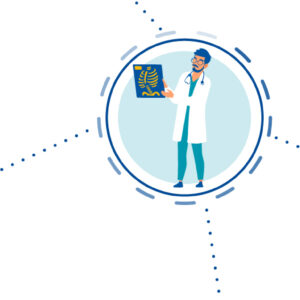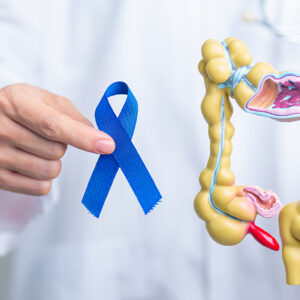Scientific Background
Autosomal dominantly inherited cerebellar/spinocerebellar ataxias (ADCA/SCA) are a clinically and genetically heterogeneous group of diseases that includes more than 40 subtypes. The prevalence is estimated to be 0.001-0.005%. The genetic cause has not yet been clarified for all types. The leading clinical symptom of progressive ataxia is common in all forms. In addition to an unsteady gait, oculomotor and speech function disorders, trunk and extremity ataxia, intention tremor and additional neurological symptoms may occur. The age of manifestation is usually between 30 and 50 years of age. However, the disease can also begin in childhood or after the 6th decade.
The most common forms involve polyglutamine (polyQ) expansion disorders: ATXN1/SCA1, ATXN2/SCA2, ATXN3/SCA3, CACNA1A/SCA6, ATXN7/SCA7, TBP/SCA17 and ATN1/DRPLA. They are caused by pathological CAG triplet repeat expansions within different genes. As with other triplet repeat diseases, anticipation, i.e., an earlier age of onset of the disease and a more severe course in successive generations, is also observed in SCAs within families.
Three types are distinguishable depending on the clinical manifestation:
ADCA type 1: Cerebellar ataxia combined with ophthalmoplegia, dementia, extrapyramidal signs, optic atrophy and amyotrophy. One form of ADCA type 1 is SCA17, which is phenotypically variable and complex. Due to its broad clinical spectrum, SCA17 can mimic other neurodegenerative diseases, such as Huntington disease, Parkinson disease and other movement disorders and cerebellar diseases, and it has also been described in patients with only psychiatric symptoms (dementia, bipolar psychosis, paranoia, etc.) without ataxia or movement disorders. Due to the clinial similarity to Huntington disease, SCA17 is also called Huntington disease-like syndrome 4 (HDL4 ). If the clinical symptoms are unclear, molecular genetic diagnostics can be used to attempt a classification.
ADCA type 2: This type includes only SCA7, which is characterized by progressive cerebellar ataxia and retinal degeneration.
ADCA type 3: A group of pure cerebellar ataxias, the most common form of which is SCA6.
- Spinocerebellar ataxia type 1 (ATXN1)
- Spinocerebellar ataxia type 2 (ATXN2)
- Spinocerebellar ataxia type 3 (ATXN3)
- Spinocerebellar ataxia type 6 (CACNA1A)
- Spinocerebellar ataxia type 7 (ATXN7)
- Spinocerebellar ataxia type 17 (TBP)
References
Coarelli et al. 2018, F1000Research 7(F1000 Faculty Rev):1781 / Ashizawa et Xia 2016, Continuum (Minneap Minn) 22:1208 / Sun et al. 2016, Clin Genet 90:305 / Reetz et al. 2011, PLoS ONE 6:e15125 / Manto et Marmolino 2009, Curr Opin Neurol 22:419 / Gao et al. 2008, Eur J Hum Genet 16:215 / Ranum et Cooper 2006, Annu Rev Neurosci 29:259 / Riess et al. 2001, Dt Ärzteblatt 23:1319 / David et al. 1997, Nature Genet 17:65 / Zhuchenko et al. 1997, Nature Genet 15:62 / Imbert et al. 1996, Nature Genet 14:285 / Kawaguchi et al. 1994, Nature Genet 8:221





















